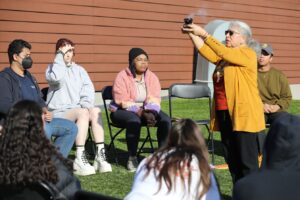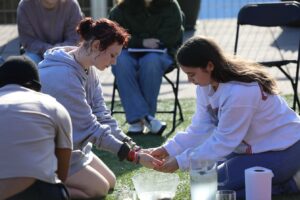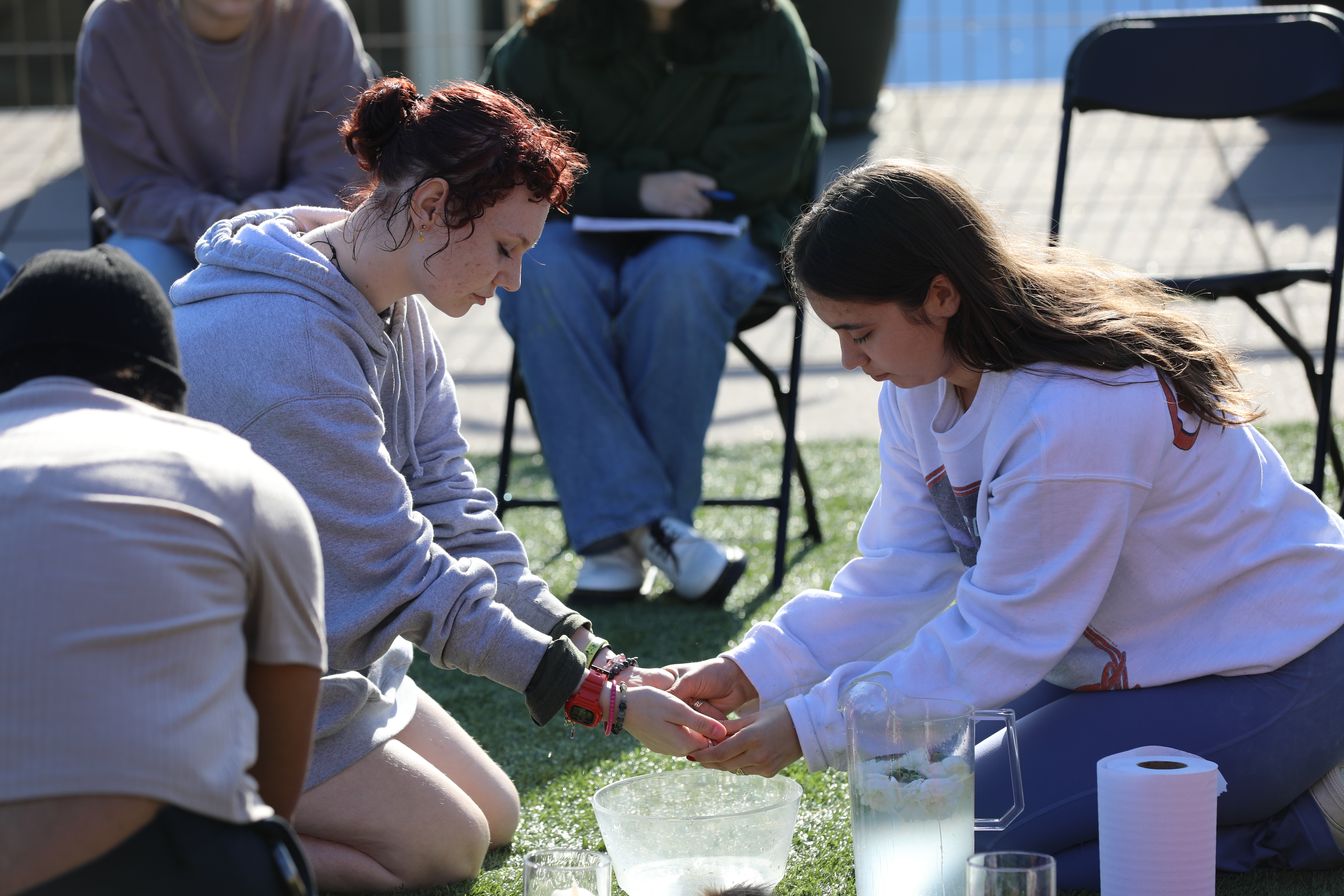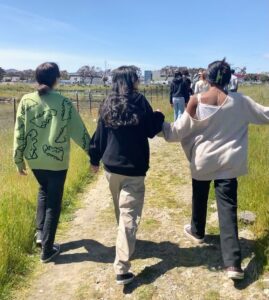In October 2021, Gov. Gavin Newsom signed into law Assembly Bill 101: a historic bill making California the first state to require ethnic studies as a high school graduation requirement. The bill specifically states that students in the class of 2030 must take at least one semester of ethnic studies during their high school career, and all California public schools must offer ethnic studies courses beginning in the fall of 2025. At Lick-Wilmerding High School, this is the first year, 2022-23, Ethnic Studies is being taught.
California 100, an initiative focused on identifying and uplifting transformative ideas, people and projects, defines ethnic studies as “the interdisciplinary study of race, ethnicity and other identities, focusing on people’s lived experiences and perspectives.” The ethnic studies curricula aims to provide students with the opportunity to learn about the histories, cultures and struggles of historically marginalized peoples, whose stories have often been misrepresented or untold in preexisting U.S. history courses.
The battle for teaching marginalized stories has been ongoing for over a century now. Beginning in the early 1900s, educator, sociologist and historian W.E.B. DuBois advocated for the teaching of Black history in American schools with the goal of challenging the prevailing narratives of Black inferiority. Over half a century later, Freedom Schools began emerging from the 1960s civil rights movement. These alternative schools steeped their curricula in Black culture and lessons drawn from Black students’ lived experiences. At about the same time, the discipline of ethnic studies launched across college campuses, as groups of Black, Indigenous, people of color (BIPOC) began considering how prevalent Eurocentric dominance in textbooks and lessons was, and demanded multicultural courses.
In 1968, a coalition known as the Third World Liberation Front (TWLF) was formed between the Black Student Union and other student groups at San Francisco State University. Together, they led a five month strike across campus to demand for a radical shift in the school’s admissions practices that mostly excluded BIPOC students. A year later, a multiracial coalition of students from University of California, Berkeley formed another branch of the Third World Liberation Front (twLF) to demand that the university acknowledge the histories of communities of color through the creation of a Third World College which would be dedicated towards bringing to light underemphasized histories of BIPOC. The three months of protests resulted not in a Third World College, but in the creation of the Department of Ethnic Studies.
Eventually, ethnic studies curricula made its way down to K-12 schools, and in 1994, Berkeley High School, in Berkeley, California, became one of the first high schools in the country to offer an ethnic studies course.
At LWHS, this is the first year Ethnic Studies course is being offered. Lead instructor of the class and Center for Civic Engagement Senior Associate, Kuya Yanni Velasquez ’15, spoke about the origin of ethnic studies at LWHS, beginning with an anonymous poster that was put on former Head of School Eric Temple’s office door. On it was written a variety of first-person experiences about what it’s like to be a student of color at LWHS, and with the poster, the demand for ethnic studies began.
From there, a collective of students and faculty came together to form the Ethnic Studies Working Group (ESWG). The group worked for over three years to build the Ethnic Studies course at LWHS, and continues to collaborate today in improving the program and building new curricula.
LWHS sophomore and current member of the ESWG, Mayen Thorsen ’25, joined the working group during the 2022-23 school year in hopes of spreading ethnic studies literacy throughout the community. “I feel like there is a bit of a stigma surrounding ethnic studies. A lot of people don’t even know what it means, and it is a slightly different definition for every person, but I think that it’s important that people normalize ethnic studies education. That’s part of the goal with having a class; it’s giving students the opportunity to take it and engage with its values,” she said.

photo courtesy of Vidigami
Today, over 80% of California public schools offer ethnic studies courses, and the other 20% are working towards implementing programs in the coming school years. However, regardless of these facts and the requirement of these courses for the 2025-26 school year, the class itself still remains controversial.
Velasquez sees the importance of ethnic studies as a space for students to feel seen, and see themselves represented; especially marginalized students who hold many intersecting identities. He described the main value of ethnic studies as “sustained living,” a phrase he credits his friend with introducing to him. “It’s living in a way that’s ‘anti-capitalist’ and combats systems of white supremacy culture. It is living a life outside of perfectionism, outside of individualism,” Velasquez said.
He continued, expressing how the “big picture word” of ethnic studies is liberation. “Liberation from the structures in place throughout our society that prioritize “products” and “quantity,” and ultimately stress students and adults out for the rest of their lives,” Velasquez said. He continued, describing ethnic studies as more than just the teaching of people’s histories. Rather, he characterized it as a life ethos which emphasizes the aspects of life lost in colonization and de-valued in capitalist societies. Aspects such as working in conjunction with nature’s structures and processes, as well as challenging white supremacy culture.
As a graduate student with a Bachelor’s in ethnic studies from the University of California, Berkeley, Velasquez prioritizes these concepts in his Ethnic Studies course at LWHS. Through regularly having his class dance for anywhere between 5 and 15 minutes, as well as structuring his class as primarily discussion based, Velasquez prioritizes students’ emotional and spiritual wellbeing as a core piece of the curriculum.

photo courtesy of Vidigami
Beyond LWHS, the values of teaching ethnic studies in high schools are extremely apparent. Between 2010 and 2014, Stanford University researchers studied the impact of an ethnic studies curriculum for academically struggling ninth grade students, who participated in a pilot program in San Francisco high schools. The academic performance for these students, identified as being at high risk for dropping out, was compared with that of classmates who weren’t enrolled in such classes. The results of the study were significant, expressing the importance of ethnic studies: overall attendance rose by 21% in comparison to those not enrolled, and students’ grade-point average (GPA) increased by about 1.4 points.

photo courtesy of Vidigami
In addition to this being the first year the course is being taught at LWHS, this is also Velasquez’s first year teaching an ethnic studies class. He expressed that his goal for the course has really been to “plant the seed for students that ethnic studies and social justice work is a lifelong process. Ethnic studies work is what you do when no one’s looking.”
As the class continues to develop, Velasquez and Director of the Public Purpose Program Ravi Lau ’92, plan to continue researching curriculum that other schools use to teach ethnic studies, as well as building more structure for the class. As a pilot program this semester, the course was being built as it was being taught, so Velasquez hopes to build a stronger structure to guide the class through different materials and explorations for future years.
In terms of fully integrating the class into LWHS’ curriculum as a graduation requirement for incoming classes, there isn’t a defined plan yet. The Center is working towards integrating ethnic studies into the Public Purpose Program (PPP) for the incoming class of 2027, and the ESWG has no doubt that in a couple years the class will end up becoming a required course.
“Right now, the Ethnic Studies class has limited seats to fill, but I don’t want students who don’t get into the class to feel like they don’t get the opportunity. The vision is that once we get enough momentum, ethnic studies will become further embedded into the school and not limited to just one class. Our goal is to honor students who come from all walks of life, and to amplify the voices of community members who feel marginalized,” Velasquez said.







